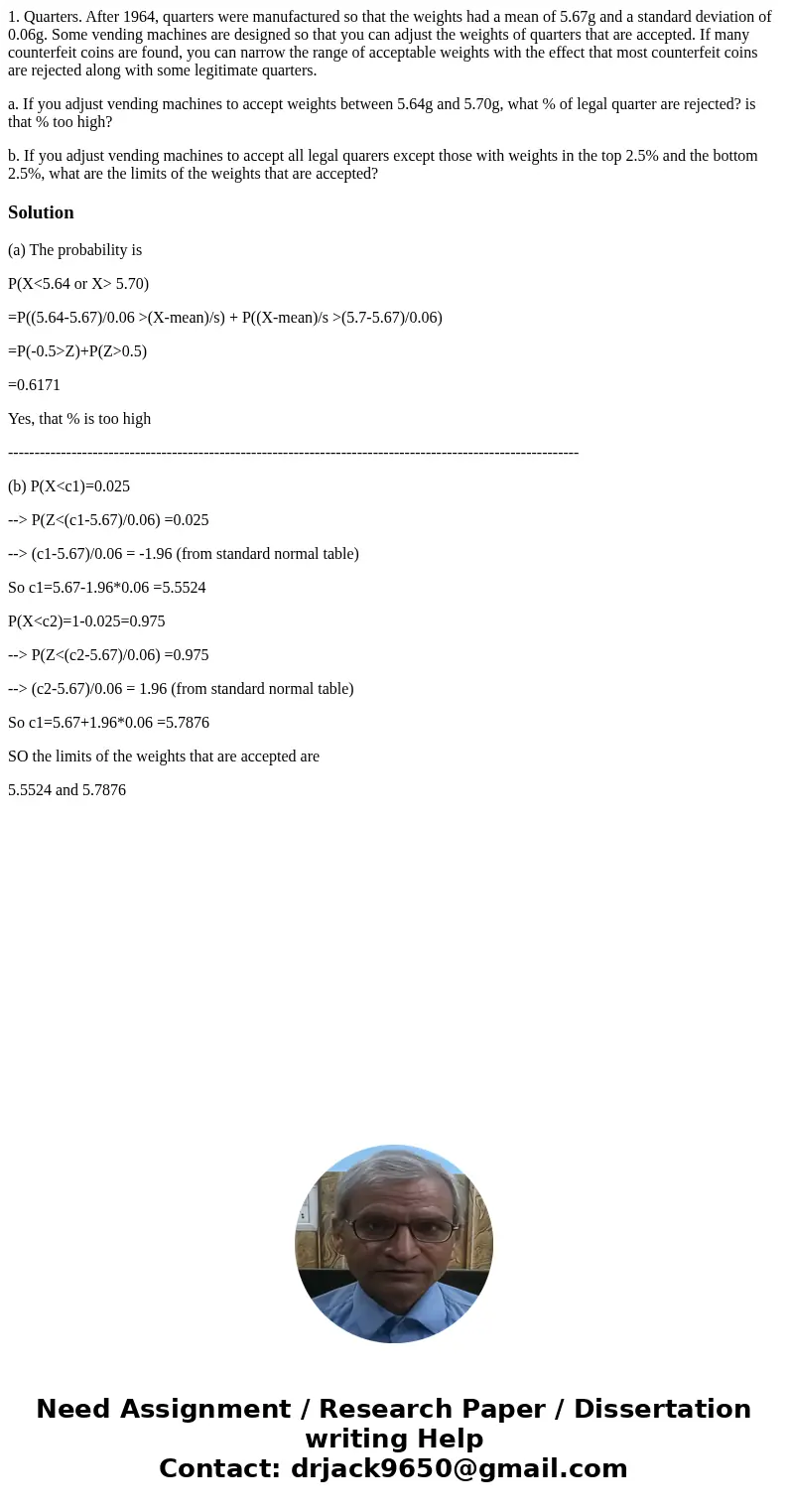1 Quarters After 1964 quarters were manufactured so that the
1. Quarters. After 1964, quarters were manufactured so that the weights had a mean of 5.67g and a standard deviation of 0.06g. Some vending machines are designed so that you can adjust the weights of quarters that are accepted. If many counterfeit coins are found, you can narrow the range of acceptable weights with the effect that most counterfeit coins are rejected along with some legitimate quarters.
a. If you adjust vending machines to accept weights between 5.64g and 5.70g, what % of legal quarter are rejected? is that % too high?
b. If you adjust vending machines to accept all legal quarers except those with weights in the top 2.5% and the bottom 2.5%, what are the limits of the weights that are accepted?
Solution
(a) The probability is
P(X<5.64 or X> 5.70)
=P((5.64-5.67)/0.06 >(X-mean)/s) + P((X-mean)/s >(5.7-5.67)/0.06)
=P(-0.5>Z)+P(Z>0.5)
=0.6171
Yes, that % is too high
------------------------------------------------------------------------------------------------------------
(b) P(X<c1)=0.025
--> P(Z<(c1-5.67)/0.06) =0.025
--> (c1-5.67)/0.06 = -1.96 (from standard normal table)
So c1=5.67-1.96*0.06 =5.5524
P(X<c2)=1-0.025=0.975
--> P(Z<(c2-5.67)/0.06) =0.975
--> (c2-5.67)/0.06 = 1.96 (from standard normal table)
So c1=5.67+1.96*0.06 =5.7876
SO the limits of the weights that are accepted are
5.5524 and 5.7876

 Homework Sourse
Homework Sourse